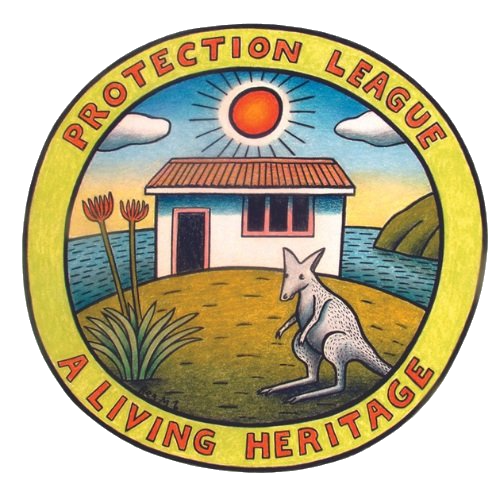First Nations
The Aboriginal people occupied this coastal land for thousands of years. Their continuing cultural heritage is acknowledged.
In the 1800s land grants were made to pastoralists.
Shacks were built between 1910 and 1950 on freehold land with the permission of the then owners. Shackholders have never been squatters.
A significant number were built during the depression when miners from the nearby Helensburgh community camped at the coast to survive the hard times.
Early Shacks in 1930’s
Protection League Lobbies to save land from development
In the mid-1940’s development threatened with the expected sale of the Era and Burning Palms land.
The people formed a Protection League with the object of purchasing the land.
When it was learnt that wealthy developers were determined to purchase the land, the Protection League lobbied, along with others, for the land to be resumed. A Protection League delegation went to the Lands Minister, Mr Sheehan in 1949.
In 1950 the land was resumed, and incorporated into the Royal National Park in 1953. From this time no new shacks were allowed to be built.
After resumption, the shackholders were allowed to remain “in possession of their huts and tents”.
Until the mid 1960’s shacks were bought and sold, with transfers of ownership being notified to the Park Trust.
NPWS Policy Leads to shacks being demolished
In 1967 the National Parks and Wildlife Service (NPWS) was formed as a government department to administer NSW National Parks.
For the next thirty years, the NPWS policy was remove the shacks.Under this policy shacks could not be transferred and more than 50 shacks were demolished. Usually this occurred on the death of the owner.
In some cases when the owner died, families just continued to pay the rent. Some elderly owners, no longer able to maintain their shack, assigned them to trusted community members. These de facto arrangements saved many shacks from demolition.
Fearing that eventually all the shacks would be demolished, the shackholders took their case for preservation to heritage bodies.
In 1993, Era and Burning Palms were listed by the National Trust of Australia (NSW), Era and Little Garie by the Australian Heritage Commission and the four communities were listed in the Wollongong Council Heritage Development Control Plan 42.


